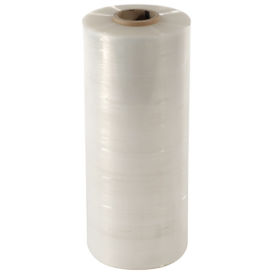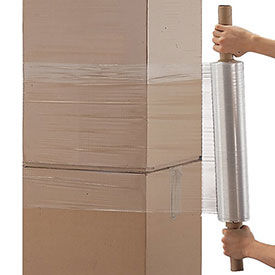Stretch Wrap Film is a highly stretchable thermoplastic film made from linear low-density polyethylene (LLDPE) used for wrapping around products. It is elastic, has high clarity and heat seal-ability, and strong tear resistance. Stretch wrap is most commonly used to wrap pallets tightly to ensure safe transportation and keep the product from shifting while in transit. The wrap can come in a variety of thicknesses, widths, and different types of stretch film. It is also used around items used for warehouse storage.
The two most popular types of stretch wrap are cast stretch wrap and blown stretch wrap. The cast stretch wrap film is made using the cast extrusion process, in which the LLDPE material is melted and extruded through a flat die onto a roil, where it re-solidifies. Cast stretch film is quiet when it unwinds from a machine, has excellent clarity, offers better tear resistance, and clings well around itself. It can either be hand-wrapped or machine-wrapped.
Blown stretch wrap offers better stretch capacity. The blown extrusion process is used to melt plastic extruded through a vertical split die to form a thin-walled tube. Air is injected through a hole in the center, and the pressure causes the melt to expand into a bubble. The bubble is pulled upwards, and a cooling ring blows air onto the film. After it is cooled, the film passes through idler rolls to ensure uniform tension throughout the film. The blown extrusion process allows the film to be more resilient. Blown stretch wrap film is noisier when it unwinds but is more tear-resistant than cast stretch film and is also much more flexible, which leads to more productivity. Blown stretch film can also be hand-wrapped or machine-wrapped.
Pyramid Packaging offers either hand or machine application stretch wrap.




